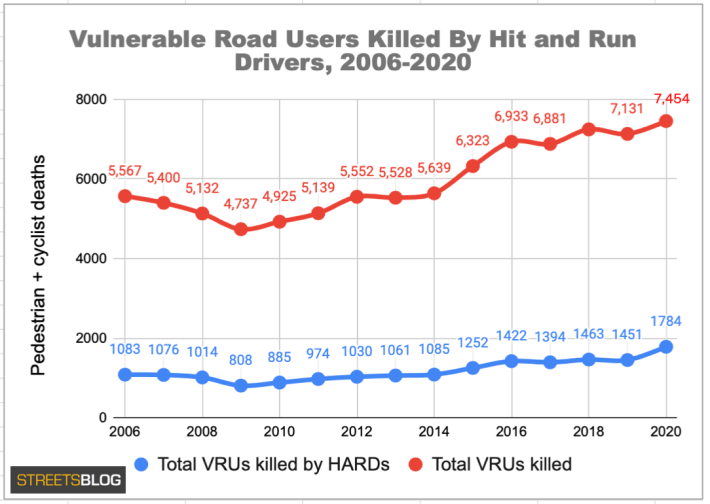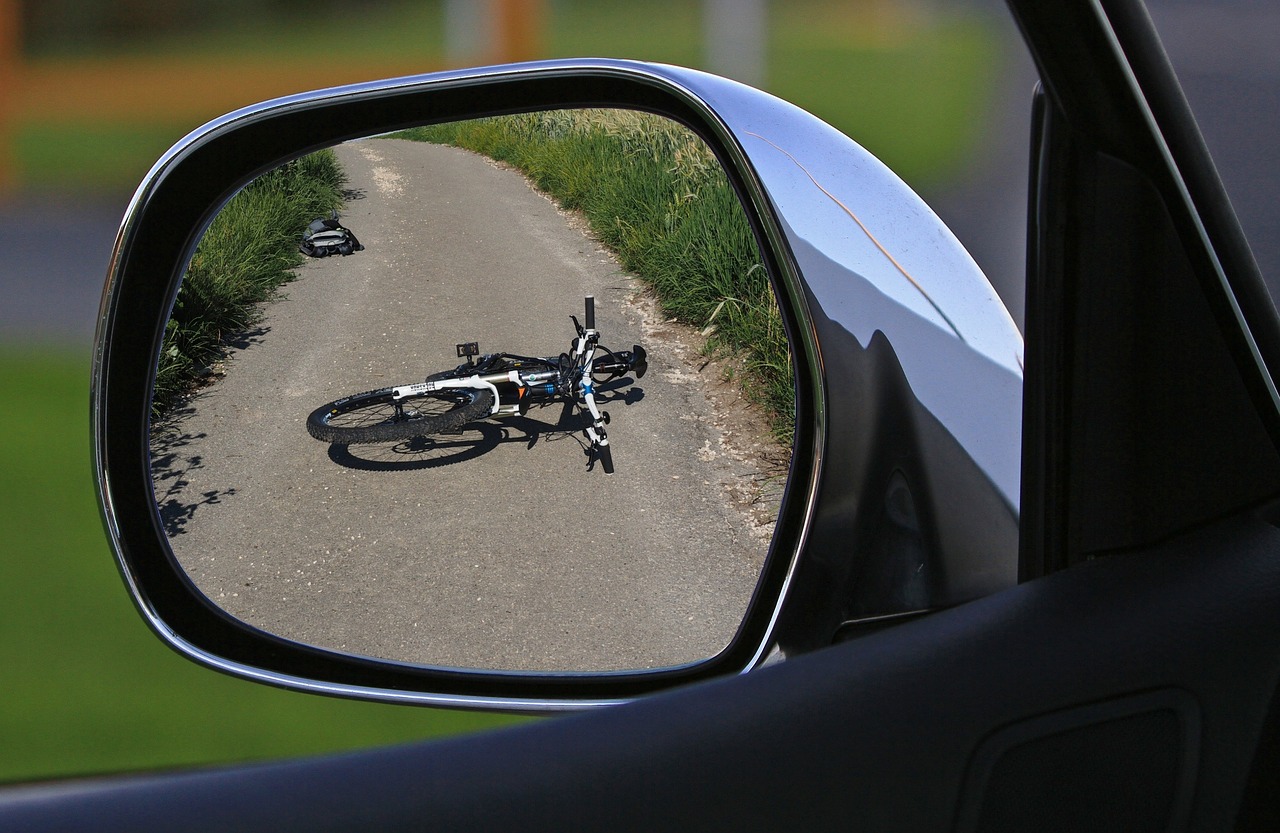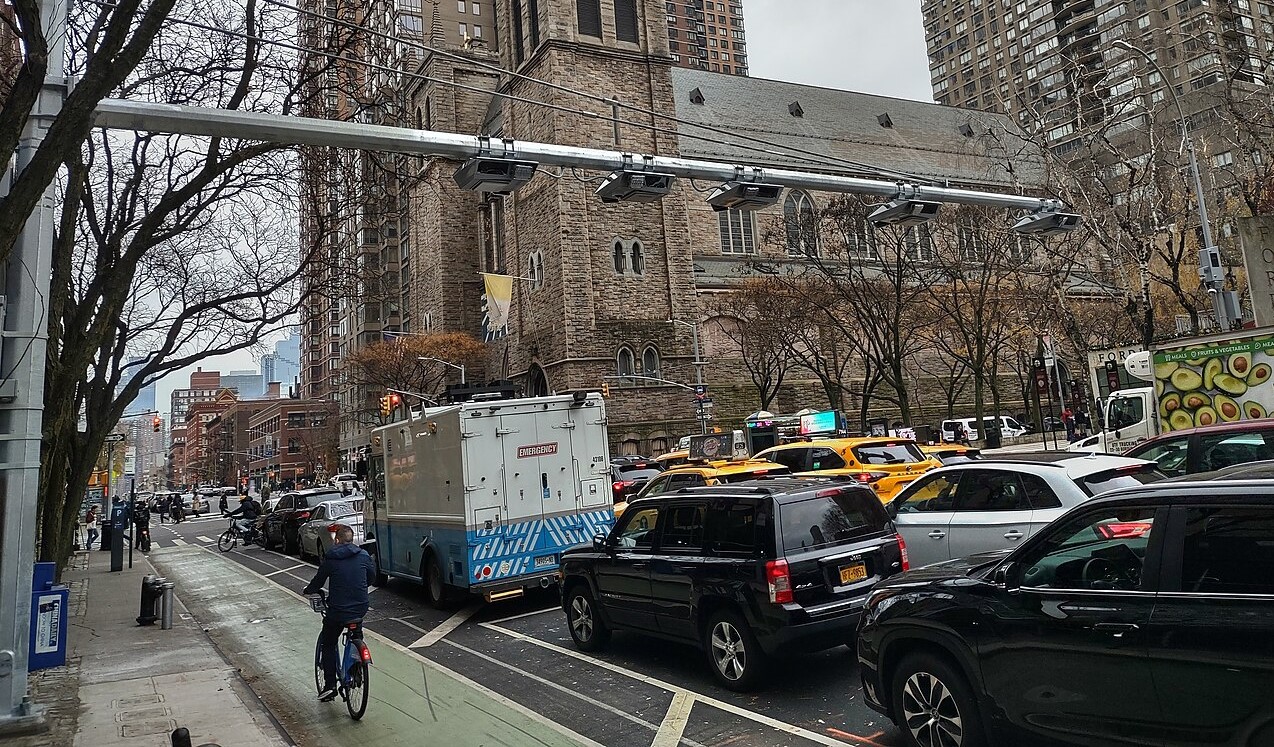A spate of pedestrian and cyclist deaths at the hands of hit-and-run drivers in St. Louis is sparking a national conversation about the unique reasons why so many motorists leave their victims to die — and what it will take to stop them.
On Tuesday, the Gateway to the West reported its sixth fatality of a vulnerable road user in as many weeks when Danyell McMiller, 47, was struck and killed by the driver of a white Kia with no plates while he rode in the painted bike lane on a 35 mile per hour, four-lane road adjacent to both a popular park and a major restaurant district where residents frequently walk. The driver fled, just like five of the six motorists involved in the recent deaths, though local media outlets have largely reported the "accident" as an isolated incident.
The news rocked the city, which experiences nearly four times as many pedestrian deaths per capita as its peer city Indianapolis, and roughly twice as many as nearby Chicago, but has so far been slow to widely implement federally recommended countermeasures to slow motorists and place physical barriers between them and vulnerable road users.
Research suggests, though, that additional countermeasures may be necessary specifically to prevent drivers from fleeing — and given how many motorists are leaving vulnerable road users to die in recent years, those interventions may be more urgent than ever.

According to the National Highway Traffic Safety Administration's Fatality Analysis and Reporting System, roughly one-fifth of people who walk and roll are killed by a vehicle operator who did not remain on the scene after impact, compared to less than 2 percent of car occupants who die in U.S. crashes. Put another way, a whopping 68 percent of all hit-and-run deaths claim the life of a pedestrian or a cyclist, rather than a person in an automobile — even though vulnerable road user fatalities constitute just 19 percent of all crash fatalities.
Even worse, both the proportion and the sheer number of hit-and-run drivers are rising. In 2020, a stunning 1,784 drivers abandoned victims who were walking and biking when they were struck, a number that, for the first time in the last 15 years, constituted nearly one in four (24 percent) of all vulnerable road user fatalities.
In St. Louis, six out of the 13 people who have died while walking or rolling so far in 2022 have been killed by hit-and-run drivers — or, as some local advocates call them, HARDs. That's 46 percent of the dead, or roughly twice that already astonishing national average.
This isn’t a pandemic related issues. We’ve had high rate of pedestrian and cyclists deaths for a long time, 4 times the national average. This isn’t a new or unknown problem nor one that started with this admin but like everything you’re in charge now and it’s on you to fix https://t.co/1uwNlSa7bs
— Denis Beganovic (@Beganovic2022) September 7, 2022
Here are three reasons researchers think hit-and-runs keep happening, beyond a dangerous transportation culture that all but guarantees that the "hits" will keep coming, even if the motorists who cause them bother to stick around.
Not enough eyes on the street — even when those streets are well-designed
Experts say the vast majority of car crash deaths can be prevented through good infrastructure that slows drivers to non-lethal levels or physically separates them from vulnerable road users. When it comes to hit-and-run driving, though, even decently-designed streets don't always save lives — possibly because there isn't always someone around to help victims after they're struck.
The majority of hit-and-run deaths happen in populous urban areas, but a 2018 report from AAA found that less-dense states like New Mexico, Louisiana, and Florida actually have higher rates of hit-and-run drivers. Researchers suspects that's because hit-and-run is often a crime of opportunity that takes place when few witnesses are around, either because, say, a community is so sprawling and car-oriented that there are few "eyes on the street" at any time of day, or because the crash happened in the middle of the night. Studies show that hit-and-runs are nearly 4.4 times more likely between midnight and 4 a.m., compared to crashes that happen in daylight or even earlier in the evening.

"In general, the greater the visibility of a potential crash, either through more potential witnesses on heavily trafficked roads or better lighting conditions, the less likely a hit-and- run will occur," the report authors wrote.
That helps explain why hit-and-runs are more likely to happen on roads with low speed limits than other kinds of pedestrian and cyclist crashes, or on isolated, lower-speed segments of faster roads, like overpasses, sharp curves, and ramps. In a city like St. Louis, which was built for a million people but today is home to just a third of that number, depopulation likely plays a role, too, particularly on the overwhelmingly Black north side, where hit and runs disproportionately happen and a vacancy crisis has raged for decades.
It's also worth noting that rapid access to emergency care is a key predictor of whether a victim will survive a car crash — and that emergency response times, which are already alarmingly low in low-income neighborhoods, can be even longer if a victim is struck on an isolated road with few neighbors around to find them quickly.
Not enough driver education
One of the first things U.S. teenagers learn in drivers' ed is that it's their responsibility to remain on the scene of a crash until the cops come. In the 18 states like Missouri that don't require a formal class to get a license, though, that life-saving lesson may be going unlearned.
Streetsblog could find no research about how well U.S. drivers understand their local hit-and-run laws, but one study found that a stunning 30 percent of convicted hit-and-run drivers in the United Kingdom left the scene because they thought "the collision was trivial and that little damage had been done," and they believed, mistakenly, that "there would be no requirement to report" the crash.
A further 15 percent claimed they did not even realize that they had crashed at all — a disturbingly common excuse even among drivers who hit human beings.
The AAA researchers believe that U.S. drivers could potentially be just as confused, and that it's "important to evaluate what role public education plays in people’s understanding of hit-and-run laws and how that affects behavior." So far, policymakers seemingly have made no attempt.
Broken carceral systems that incentivize drivers to leave victims behind
True accountability for roadway crimes is all too rare in U.S. communities, particularly when it comes to the institutions that knowingly perpetuate dangerous conditions on our roadways. The question of whether America's criminal justice system is equipped to deliver that accountability, though, is a topic of hot debate — and in the case of hit-and-runs, it may be making the problem worse.
The uncomfortable truth of the matter is that many hit-and-run drivers leave the scene of their crimes, at least in part, because they have been already been criminalized in some way that could compound their punishment for subsequent crimes — which helps explain why so many of them make the deadly choice to save themselves from what they believe will be life-destroying legal ramifications, rather than staying on the scene and perhaps saving their victims' lives.
The AAA researchers say that of the roughly half of fleeing motorists who are eventually caught, most "are more likely to be young males and have a history of prior DWI and license suspension." They also "tend to drive older model cars, suggesting having a lower socioeconomic status," which is itself correlated with convictions for non-violent traffic crimes like being unable to afford to pay roadway tolls.

Even drivers without criminal backgrounds have good reason to fear contact with a criminal justice system that incarcerates more people — particularly Black men — than any nation on Earth, not to mention contact with law enforcement officers who disproportionately kill people of color even for non-violent traffic crimes.
The United Kingdom has a less-aggressive track record on that front, but researchers there still found that 40 percent of HARDs "described their decision to flee as an act of self-preservation." A further 13 percent "were trying to hide the fact that they were under the influence of alcohol or other drugs," which could be perceived as an act of self-preservation, too, considering that the punishment for crashes caused by impaired drivers is often far more strict than for crashes caused by sober ones, even if those incidents are equally deadly.
Perhaps counterintuitively to some, making punishments for hit-run-driving worse may actually encourage drivers to flee, even though motorists rarely face much jail time for the crime when they're caught. The AAA cites studies that have found that "states with a maximum prison term of five years have a similar rate of hit-and-run pedestrian fatalities as states with a maximum prison term of 25 years," and at least in Japan, "stricter traffic safety laws ... decreased the overall rate of pedestrian crashes but increased the likelihood of a driver fleeing the scene."
There's some evidence that by decriminalizing other behaviors associated with hit-and-runs, like allowing undocumented immigrants to legally receive driver's licenses, motorists can be persuaded to stick around.
In St. Louis, in particular, reforming the region's notoriously punitive fine and fee systems may be uniquely impactful. Even getting a license plate in the River City is an onerous, expensive process that requires motorists to pay sales tax on their newly-purchased vehicles at a DMV rather than at the initial point of sale, and then pay an annual personal property tax on the value of their vehicle in order to renew those plates — something that low-income motorists can't always afford, even if the sparse local transit network fails to meet their needs. Reforming the vehicle registration process could pave the way for automated enforcement strategies that are currently functionally illegal in the state, without increasing the presence of armed human officers.
However St. Louis and other U.S. communities go about it, one thing is clear: to end the hit-and-run crisis will likely require a reckoning not just with a broken transportation system that all but ensures that people will die, but with a broken criminal justice system that single-mindedly focuses on punishment without addressing the systemic drivers of an epidemic that we can't jail our way out of.
This story has been updated with the identity of the victim and additional details about the September 6 crash.






